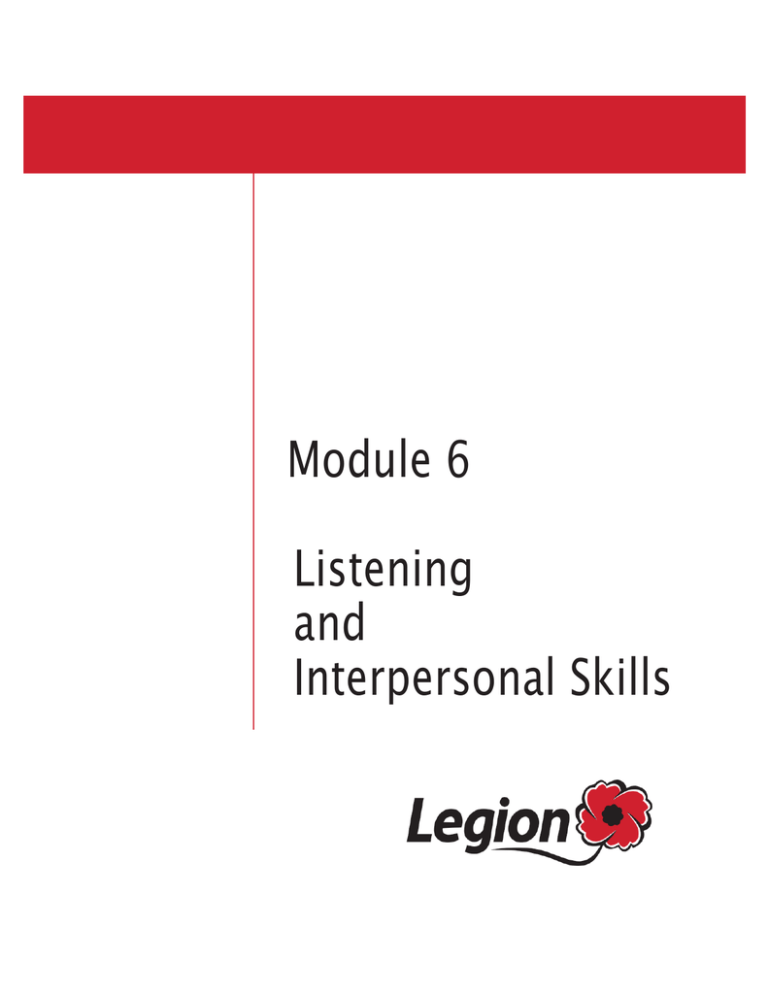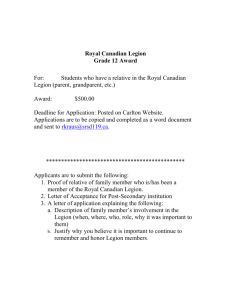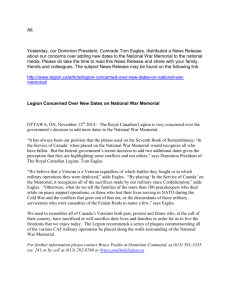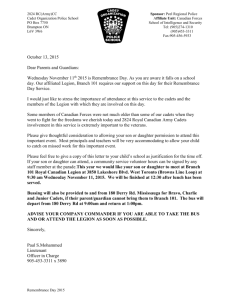47 - The Royal Canadian Legion
advertisement

Module 6 Listening and Interpersonal Skills CON TEN T OU TL INE MODULE NAME Listening and Interpersonal Skills MODULE CHAPTERS Problem Solving Listening Skill How to Motivate Effective Goal Setting People Skills Positive Thinking Personal Development Identifying Learning Challenges Recruitment and Retention Public Speaking Understanding Training Opportunities Sensitivity Training MODULE AUDIENCE This module will assist all members in strengthening these essential life skills to enhance their communication and interaction with individuals in an organizational environment. MODULE DESCRIPTION The module will focus on improving communication through the development of a set of abilities that enable a person to interact positively and work effectively with others. These skills are essential qualities for those intending to hold branch leadership roles and are beneficial in dealing with personnel issues. DURATION OF MODULE REVIEW Members can anticipate taking up to 2 hours to review all module content. LEARNING OUTCOMES Members completing the module will be able to recognize the importance of interpersonal skills and understand the effectiveness of strong communication. 2 Royal Canadian Legion Dominion Command Leadership Development Program PR OBL E M S OL VIN G PROBLEM SOLVING Problem solving as defined by Wikipedia is as follows: The term problem-solving is used in many disciplines, sometimes with different perspectives, and often with different terminologies. For instance, it is a mental process in psychology and a computerized process n computer science. Problems can also be classified into two different types (ill-defined and welldefined); from which appropriate solutions are to be made. Ill-defined problems are those that do not have clear goals, solution paths, or expected solution. Well-defined problems have specific goals, clearly defined solution paths, and clear expected solutions. Well defined problems also allow for more initial planning than ill-defined problems. Being able to solve problems sometimes involves dealing with pragmatics (logic) and semantics (interpretation of the problem). The ability to understand what the goal of the problem is and what rules could be applied represent the key to solving the problem. Sometimes the problem requires some abstract thinking and coming up with a creative solution. Problem solving is easily defined as what the goals and what are the barriers are preventing you from achieving them. In complex problems you will sometimes find some barriers will expose other problems that will have to be solved as well. Generally problems identified at the Branch or Command level do not require split second decisions. Problem solving is best approached as a team (executive) effort. Clearly identifying the problem and goals, then brainstorming the problem can be very productive. Once action has been set in place 3 then monitoring and follow up is required to ensure that goals have been met and no further action is required. You do not want to see the same problem a year later. There are numerous examples of where problem solving techniques can be used, for the following examples: 1. Branch operations have been in the red for several years and financial reserves are being used for continued operation. You don't need to be a financial genius to see that this mode of operation is not sustainable and obviously corrective action will have to be taken otherwise the Branch will close within a specified period of time. 2. Although there is extremely good membership support of the bar, this area of operation is not showing the profit margin that it should be. Obviously this is a problem and must be dealt with. The same techniques used to identify how branch operations were to be turned around as in the previous example will be used with this problem as well. 3. The Branch has just suffered a fire and will not be habitable for at least 3 to 4 months. The executive wants to keep branch activities functioning on a daily basis while branch renovations are taking place. Again the same techniques are used to identify the goal and the barrier(s) to overcome to achieve success. Remember Comrades no problem is insurmountable, it is just another challenge to overcome and can be achieved with a willingness by the membership. Royal Canadian Legion Dominion Command Leadership Development Program It might help if you understand that the same problem solving techniques that are used to solve minor problems can be successfully used to solve major problems. Be sure to include your executive members and other knowledgeable members as required. If necessary contact your Zone and/or District, or provincial Command for their input and guidance as you advance through the various steps. You will need to initially assess the problem, then determine what action can be taken, the cost related to the action and the effect it may have on the business of the branch. You may need to contact your insurance company, their guidance will be invaluable. Above all do not panic, do not assume you can take on the problem alone or that you know more than others. 4 Royal Canadian Legion Dominion Command Leadership Development Program 5 Royal Canadian Legion Dominion Command Leadership Development Program






